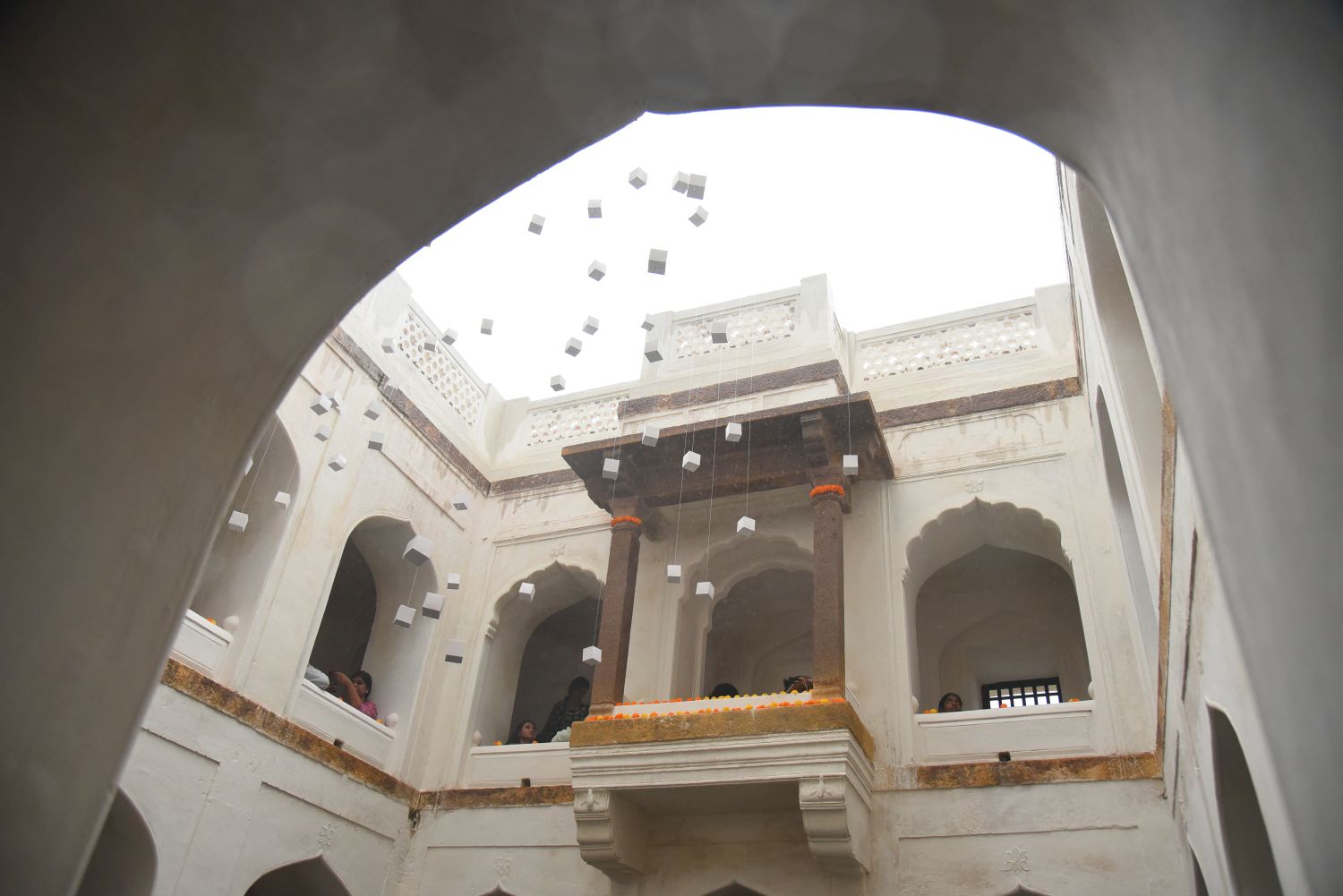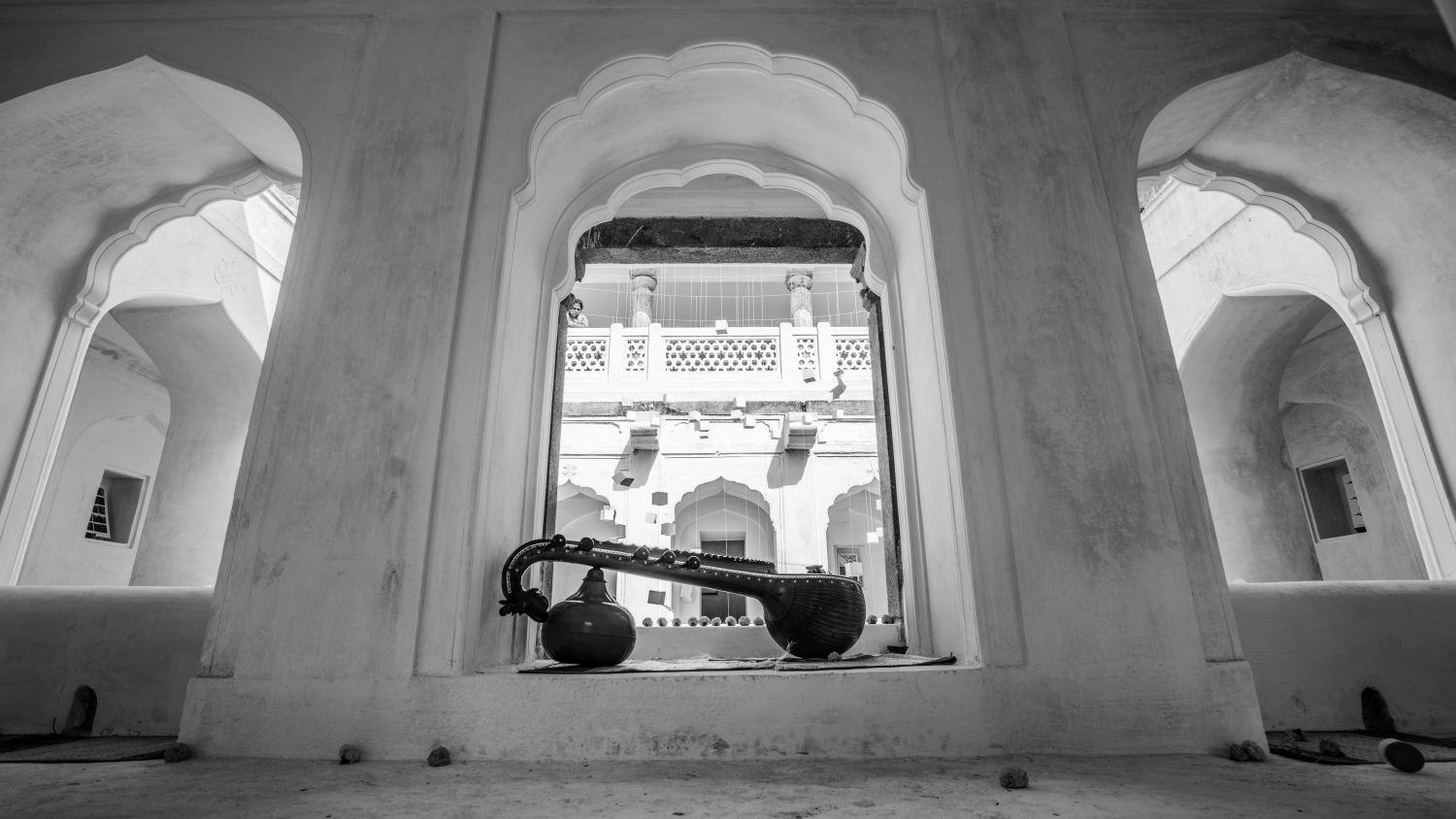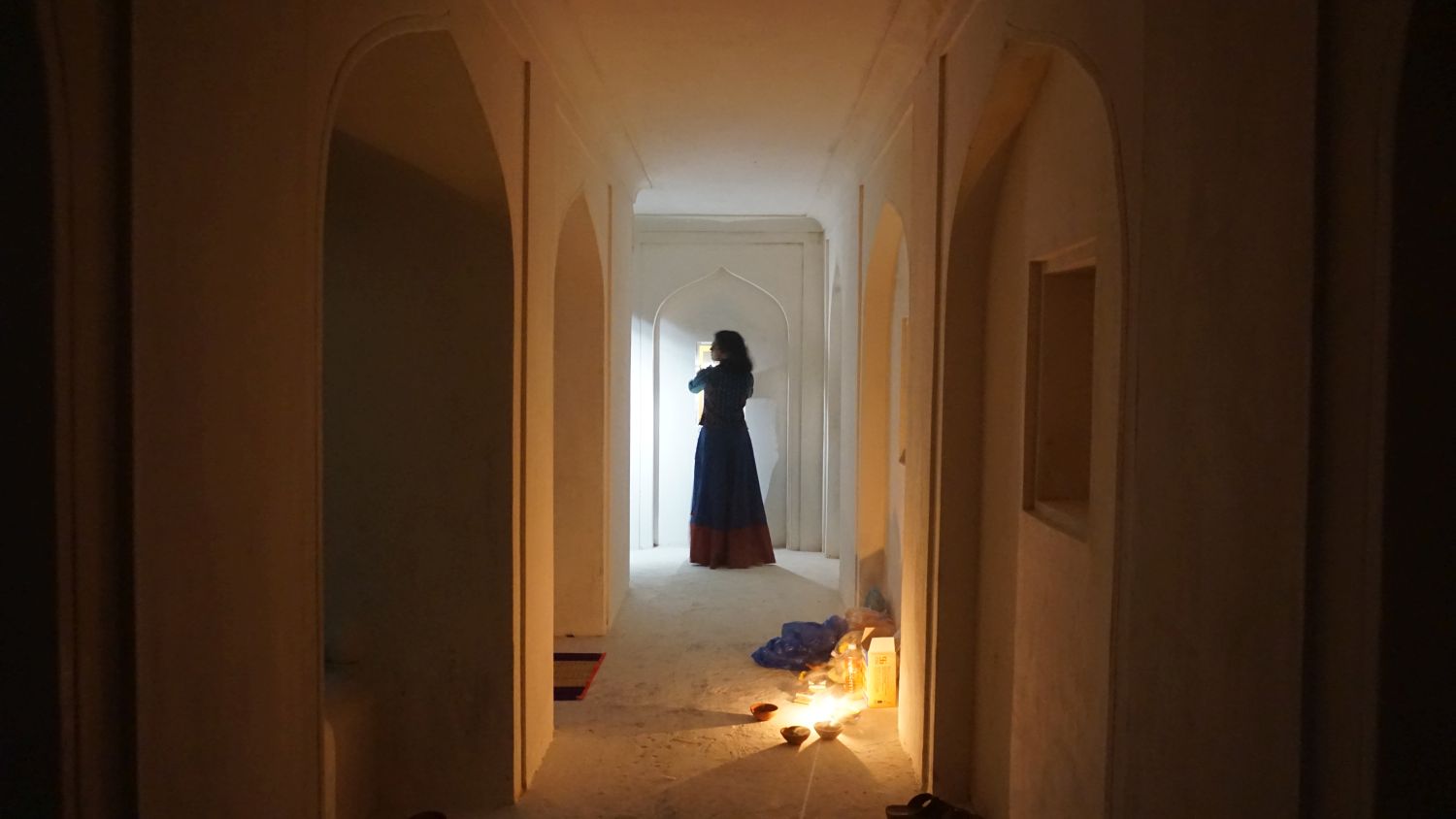
The conservation is a collective effort towards re-establishing the connection between people and the historical water systems, this being a pioneer in state of Telangana. Nearly two years ago, as the clouds showered generously we walked in the upper level corridors, imagining the levels covered in water beneath. As we were walking around the subterranean structure, hiding in one corner was a turtle who missed going back to the bottom levels along with the settling waters. As we guided the turtle to find her way, she swam into the waters with a sense of tadapna, A feeling that we could strongly empathise with, for our research on traditional water systems for over a decade had come to realisation into conservation on ground through the Stepwell at Bapughat. As we began with physical documentation of the stepwell, everyday there was something new which unfolded.
In a presumed stillness it dwells, while thresholds of light, wind and water are continuously crossed through its crevices, bringing life to the darkest of corners. The water rises slowly, patiently, and the fine sheet of dust on its surface leaves behind an imprint of the steps that lead down to its source. The steps that were once strangers, which turned into mysteries and then revelations as time went by. It was a quiet wonder that unraveled one (of many) stories of the step-well, all while its visitors to bloom from within. The step-well is a three tiered structure made of stone masonry and lime plaster, its architectural features reflect an amalgamation of styles from the Kakatiya’s period to the Nizam’s. The step-well is presumed to be the source for the “Bagh” (pleasure garden) during the Asif Jahi era. The baoli existed even before the construction of Bapu Ghat in 1948, one of the places where Gandhi’s ashes were immersed.
The structure is built with stone masonry and covered with lime plaster of 2 inch thickness. Loose lime plaster, paint, and elements that were added over the years were removed. In the process, motifs and other details that were hidden under layers of paint were revealed. This highlights the intricate craftsmanship and design sense from three centuries ago. To clear stagnated water and slit, a manual process of de-watering and de-silting of the stepwell was done. The silt was lifted up and carefully disposed of with a manually operated crane. During the process, clogged aquifers opened up, thereby reviving the hydrological cycle. During the process of de-watering, three turtles, one catfish and one snake was discovered and conserved. The process of vegetation removal and treatment to prevent further growth was done using treated lime and natural admixtures.
As we celebrate our endeavor to holistically revive this stepwell, enormous and varied response received for ‘Kua ek hai’ – call for creative expressions, made a difference to 300 year old history of the restored stepwell at Bapughat. It was festive at Akarmaa Studio in Hyderabad with more than fifty people working parallely, in their carved out niches assembling different pieces of the puzzle. ‘Aru~Uru’ is a collective narrative copy-left exhibition of expressions towards water and heritage, evoking the transcendence of the formless contained within a form. The expressions were varied in nature from a group orchestrated live chorus performance to art by school children. The varied visual expressions were composed into panels and exchanged amongst artist by end of the exhibition.
Every turn of its corridors presented a new tale. Sounds of scraping and hammering added to the narrative, their echoes preserved as more layers were peeled from its surfaces. The walls have absorbed them, surely, to tell a tale for another time. They morphed to bring to life new theories and narratives, like clues in a treasure-hunt. It lives through the waters that embrace its stone, leaving imprinted colors, one for each season. It lives through the smile on anna’s face as he scrapes the last vestiges of paint off the wall, revealing a flower in bloom. We are indebted to all the people from past 300 years, who have been part of the process.
Drawings
Project Profile
Location : Langar houz, near Musi river, Hyderabad.
Typology : Conservation of Step-well
















3 Responses
What a wonderful effort and work! My heartiest congratulations to the team!
Really commendable work. Respect the team. Even the narrative is so evocative. Loved this restoration effort!
its an amazing gesture to preserve history.